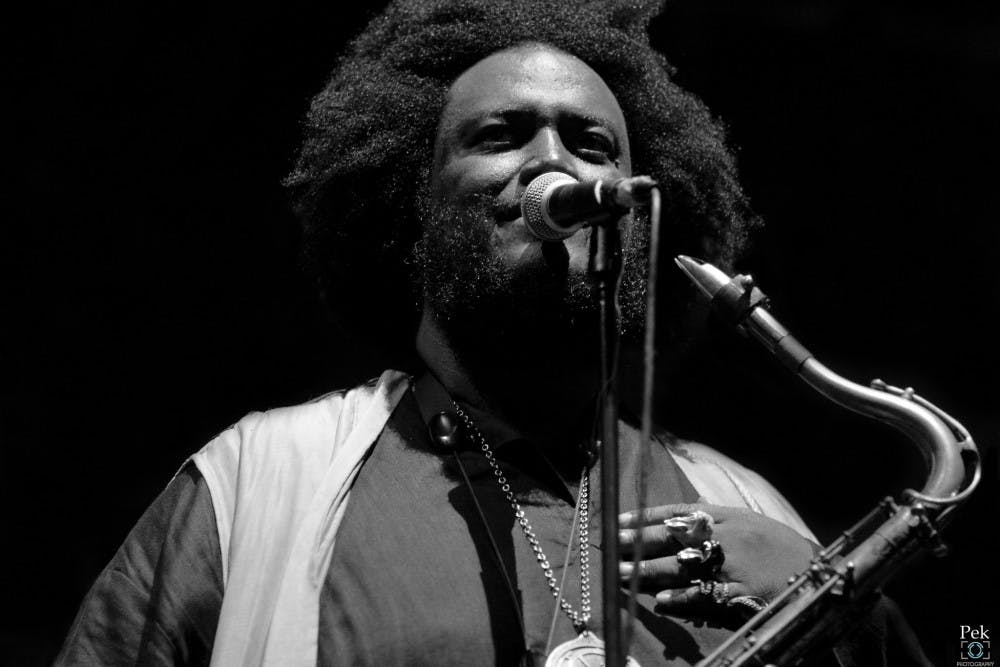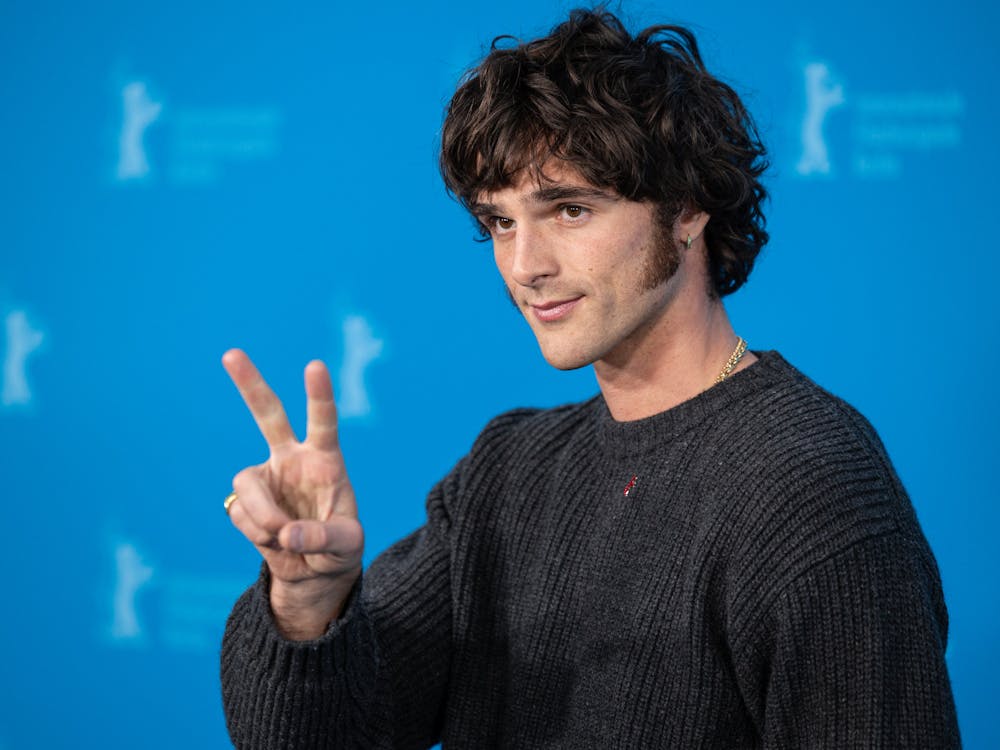Kamasi Washington’s film As Told to G/D Thyself screened at the Parkway Theatre on Friday, Feb. 21. The saxophonist, band leader and torch-bearer of contemporary jazz made the film following the release of his conceptual two-part album Heaven and Earth. Washington explained during the interview portion of the night how he decided on the visual accompaniment to the music.
“When I played the music, I saw things in front of me,” he said. “It felt really visual to me. I see the sounds.”
After the release of Heaven and Earth, Washington approached Bradford Young (or Brad as Washington calls him) to work on this project with them. Young is the cinematographer behind the stunning visuals of Selma and Arrival. The duo later expanded into a filmmaker collective called The Ummah Chroma along with Terence Nance, Jenn Nkiru and Marc Thomas. As Told was their first project together.
The film was shot in Baltimore last year, the familiar row houses often in black and white in the background of the scenes. Part of it was filmed inside the emptied halls of the Baltimore School for the Arts (BSA), featuring some of the students. One of the students, 15-year-old prodigious saxophone player Edhan Goodridge, is featured in a scene where he practices his instrument in a music room.
The event drew an excited crowd that packed itself into the seats of the Parkway. Some were students at BSA and some were from the crew, but many attendees had a connection to the filming of the project. Before the film started, Elissa Blount-Moorhead, a local artist and host of the evening, read through a long list of thank-yous, making sure everyone got their due applause — nearly all of the people in attendance.
“Some of you may know we had our official premiere at Sundance,” Blount-Moorhead said. “But all of us consider this the real premiere.”
The audience cheered, the pride and love for the project teeming through the room.
In an important and poignant moment, Blount-Moorhead mentioned the Parkway allowing the project to screen with free admission. She referenced the skepticism that members of the Baltimore community felt toward the expensive Hopkins-affiliated property in Station North which might exclude Baltimore residents.
“When the Parkway first went up, some of us weren’t sure if it was here for everyone,” she said. “But I just want to say that it is [for everyone], and if it’s not, then make it for everybody.”
The film itself was a stunning achievement. It shows various characters across Baltimore in lingering vignette-like shots that move slowly over Washington’s flying sound. Flashes of color zip across the screen. The images stick in your mind. The film as a whole asks the question: What does God mean to the individual?
After the screening, Young joined Washington and Goodridge, the saxophonist from BSA, on the stage for a conversation about the film. Young started by asking the musicians about how they use jazz as a vehicle for expression, to which Goodridge talked about his experiences in music.
“When I went into music, I never thought I’d see myself where I am now in the acting field, or being able to stand in the presence of someone like Kamasi Washington,” Goodridge said. “This Heaven and Earth album not only inspired me but pushed me in a new direction.”
Young then asked Goodridge how knows music is what he wants to do.
“Playing a horn,” Goodridge said, “is like being able to put your soul through something. Putting your internal self through the instrument.”
In talking about the process of making the film, Washington credits the inception of the images to Jenn Nkiru (who also directed the video for “APESHIT” by Beyoncé and Jay-Z).
The iconic red-clad figure at the beginning of the film was Nkiru’s idea: “Jenn had the vision and we went from there,” Washington said. But on developing the through line connecting the scenes, Washington said he wanted to push the idea of self discovery.
“When you discover who you are, you’ll discover that you’re all very powerful,” he said. “None of us are really more powerful than the other one. It’s just that we’ve forgotten most of it.”
Washington’s film comes out soon on digital platforms, and he continues to tour around the country with his band.





